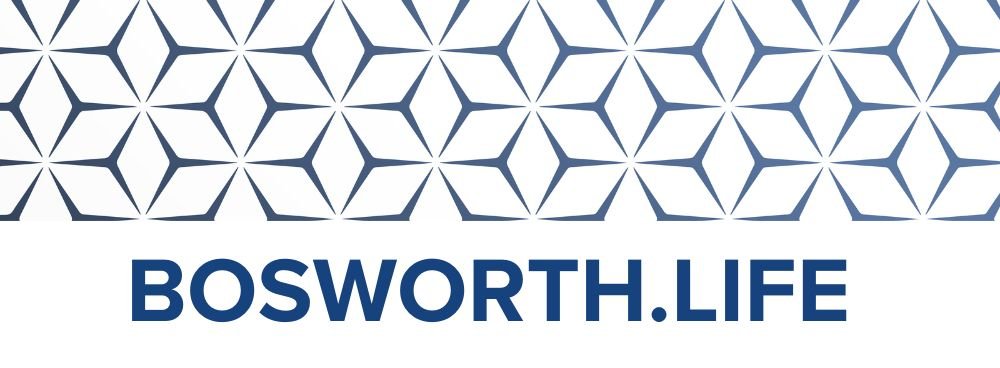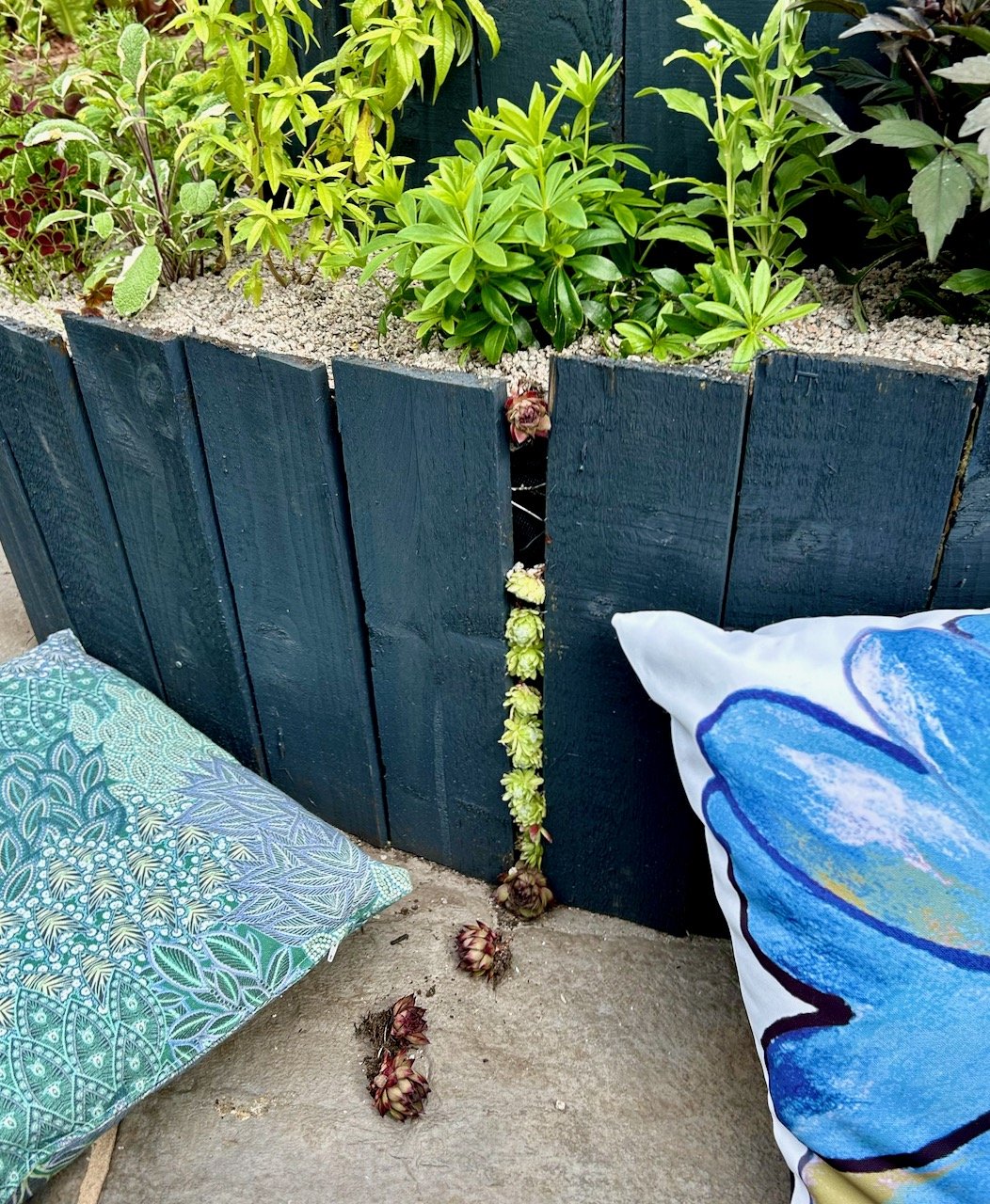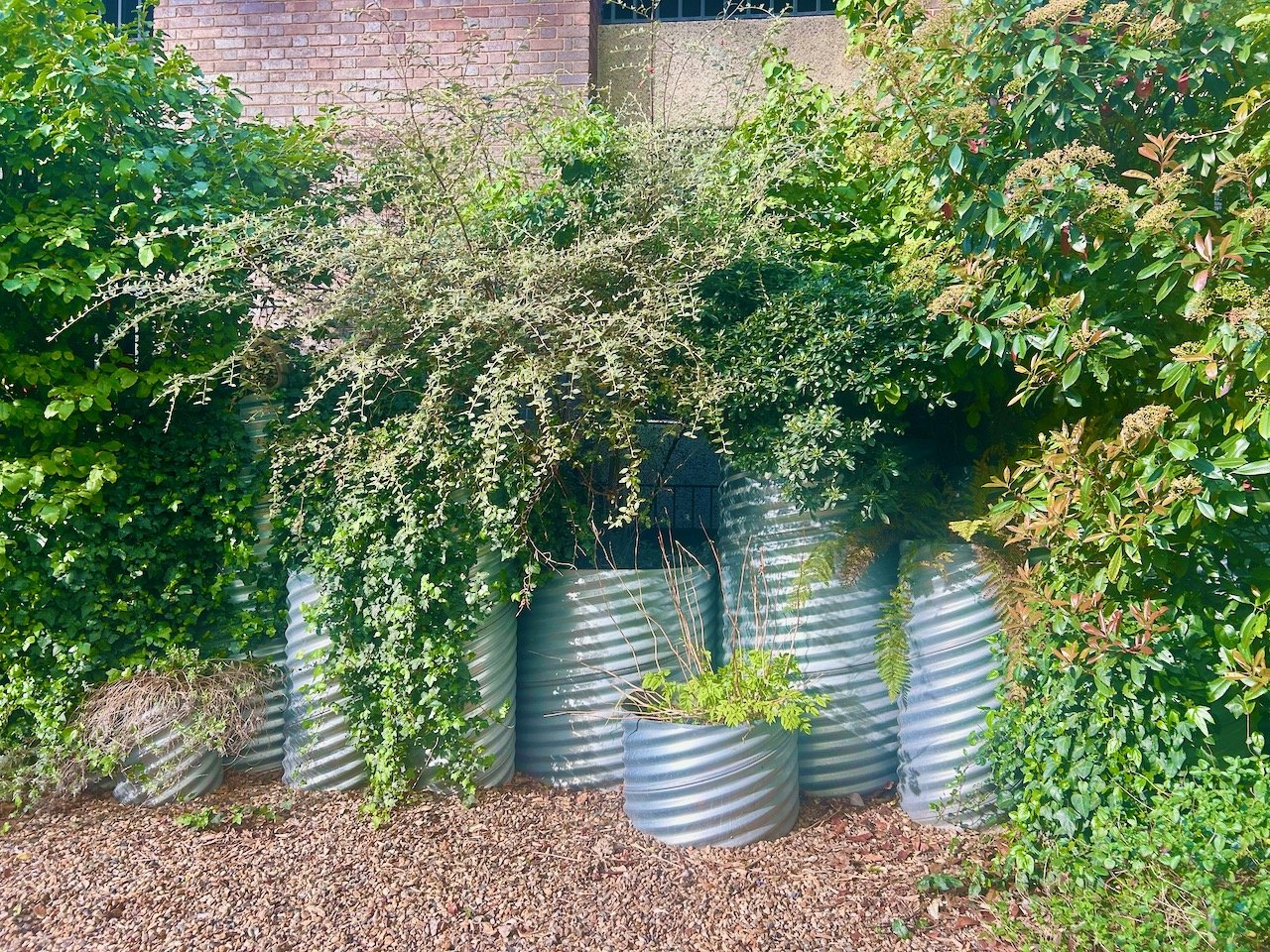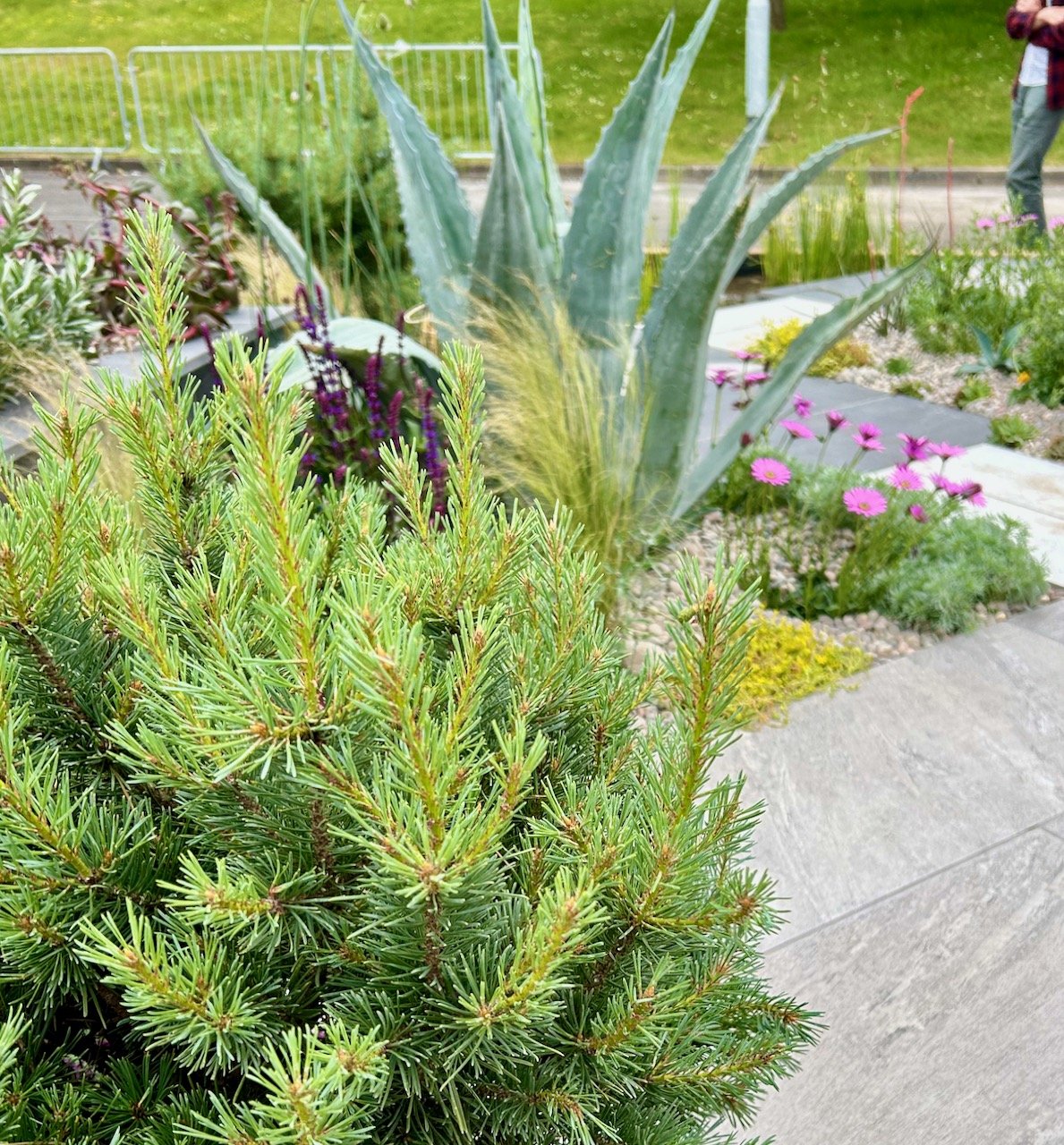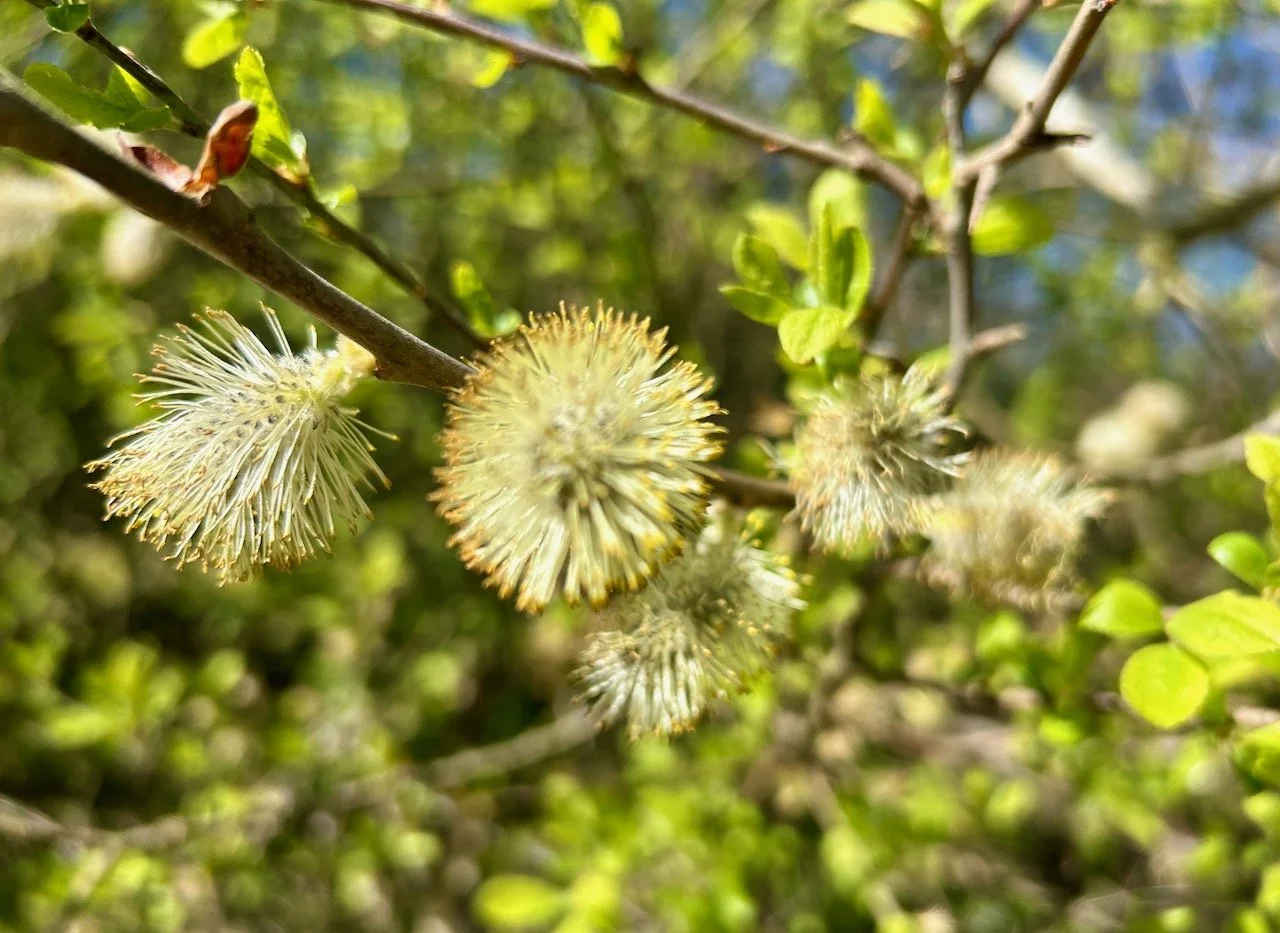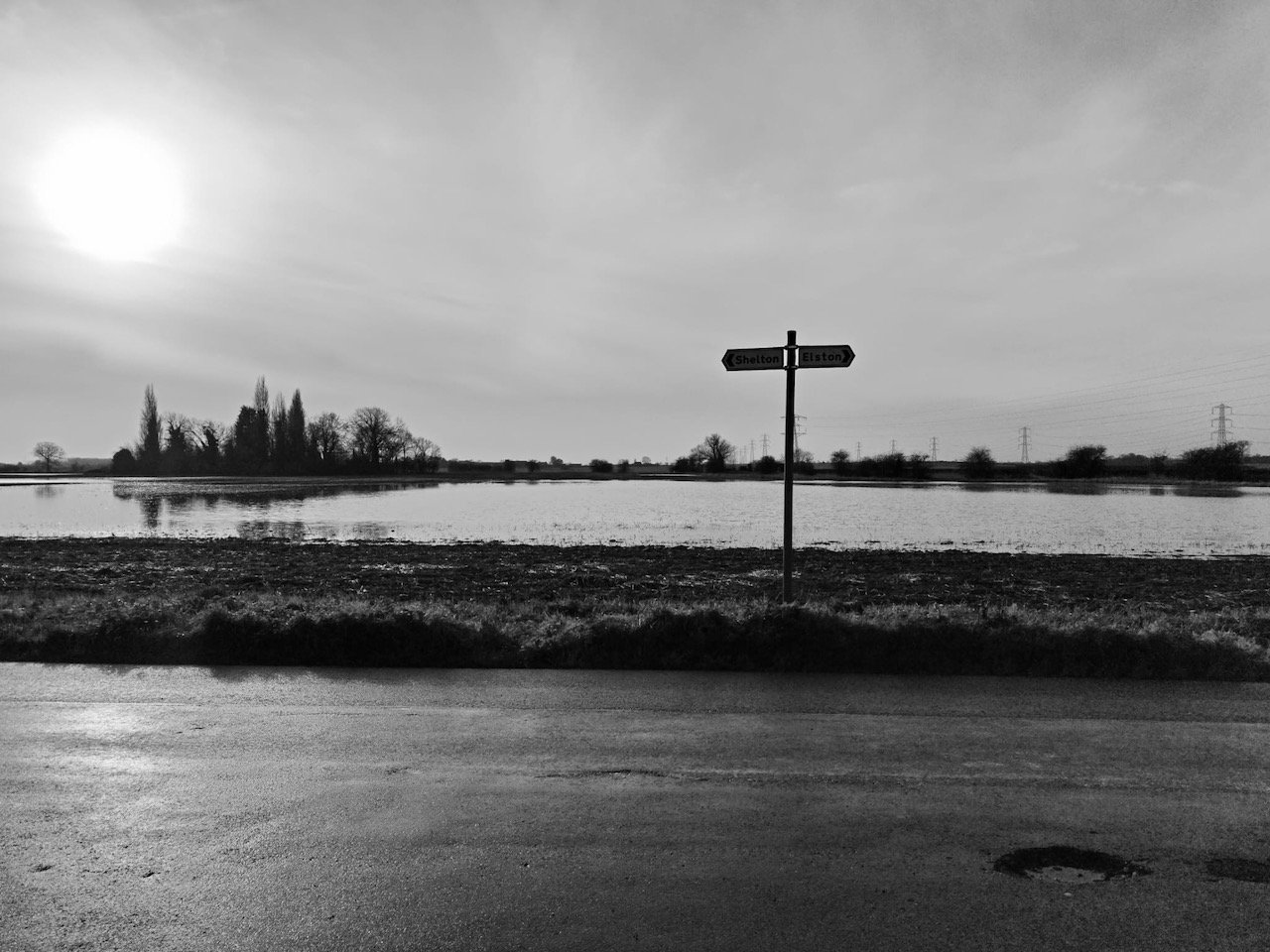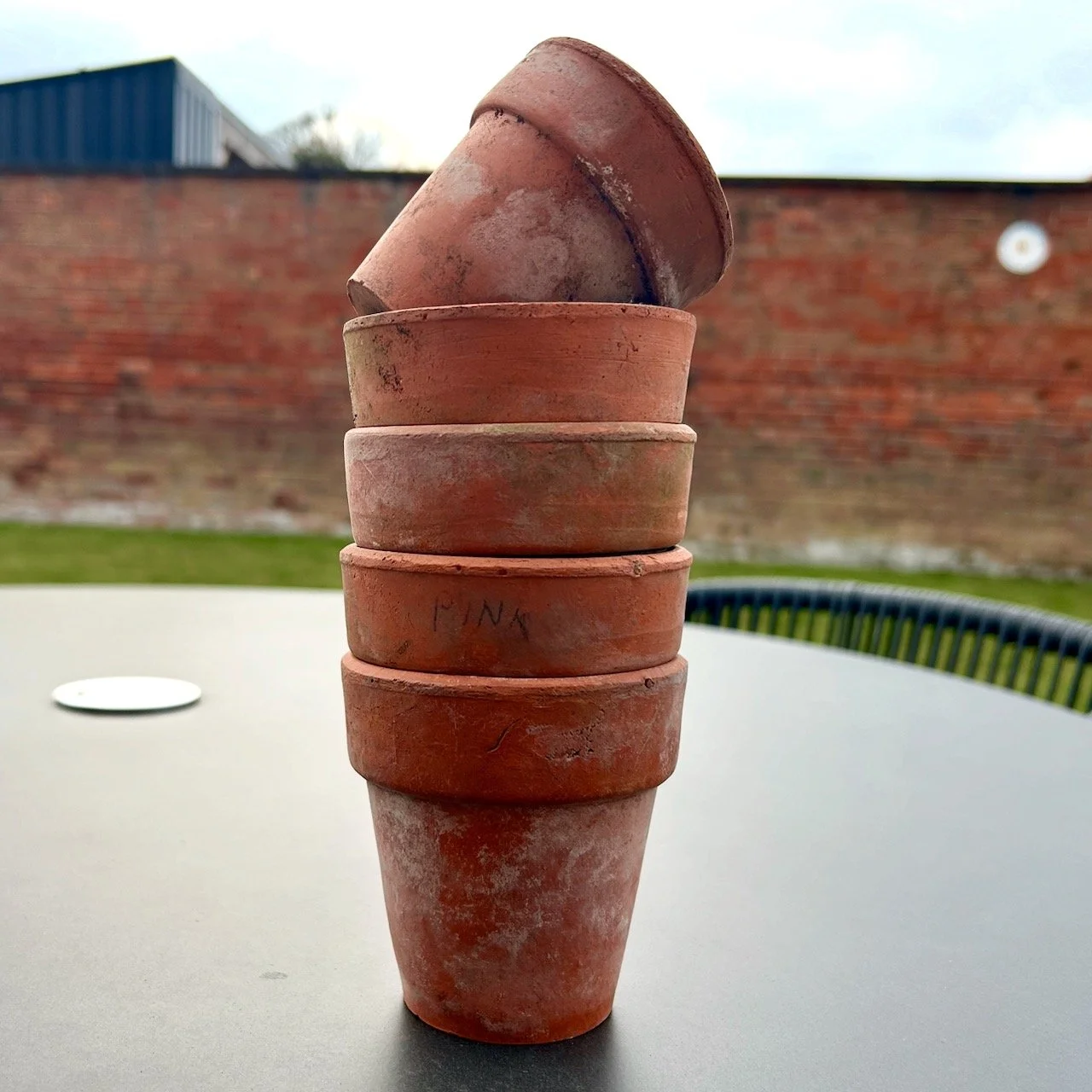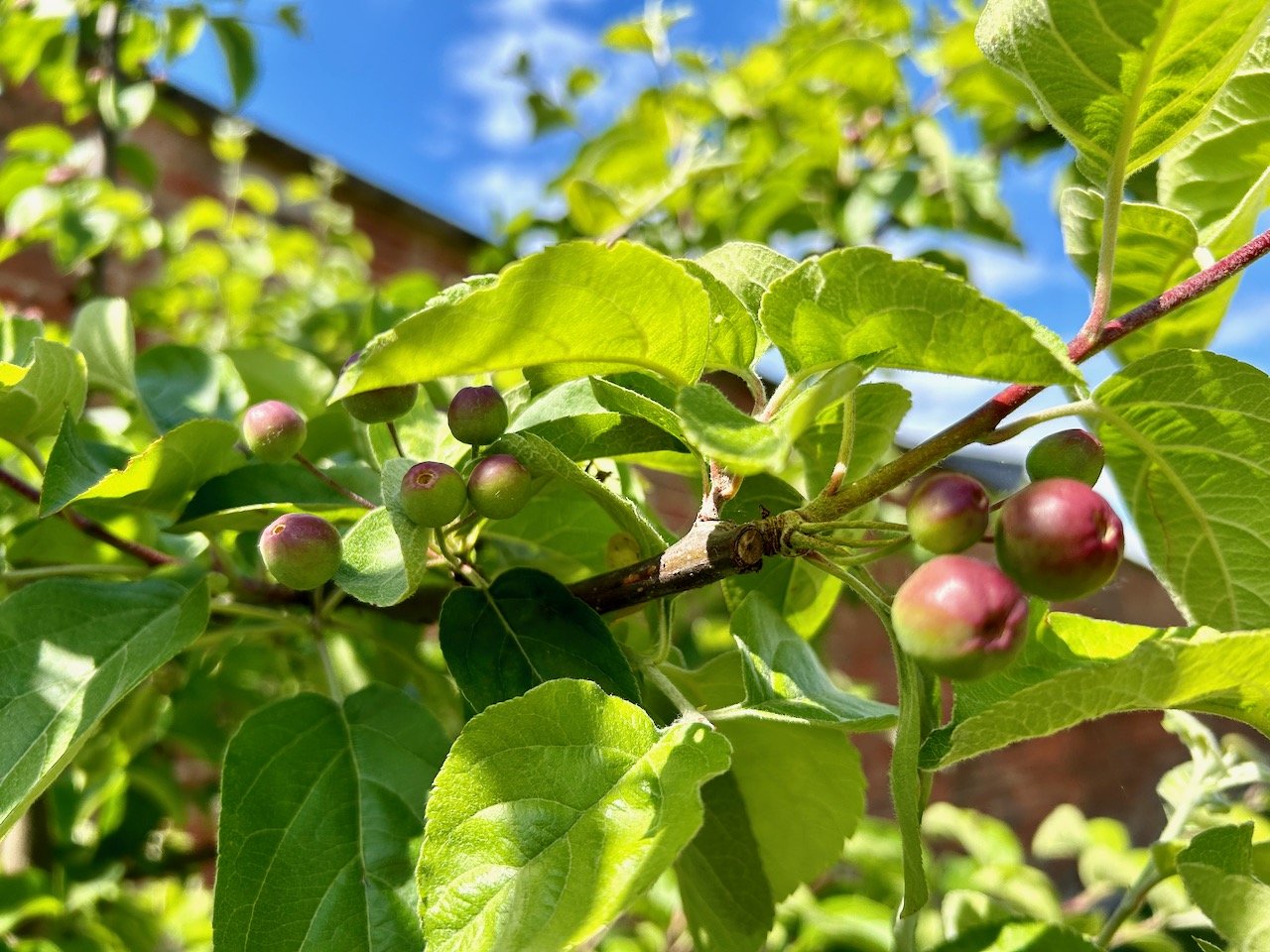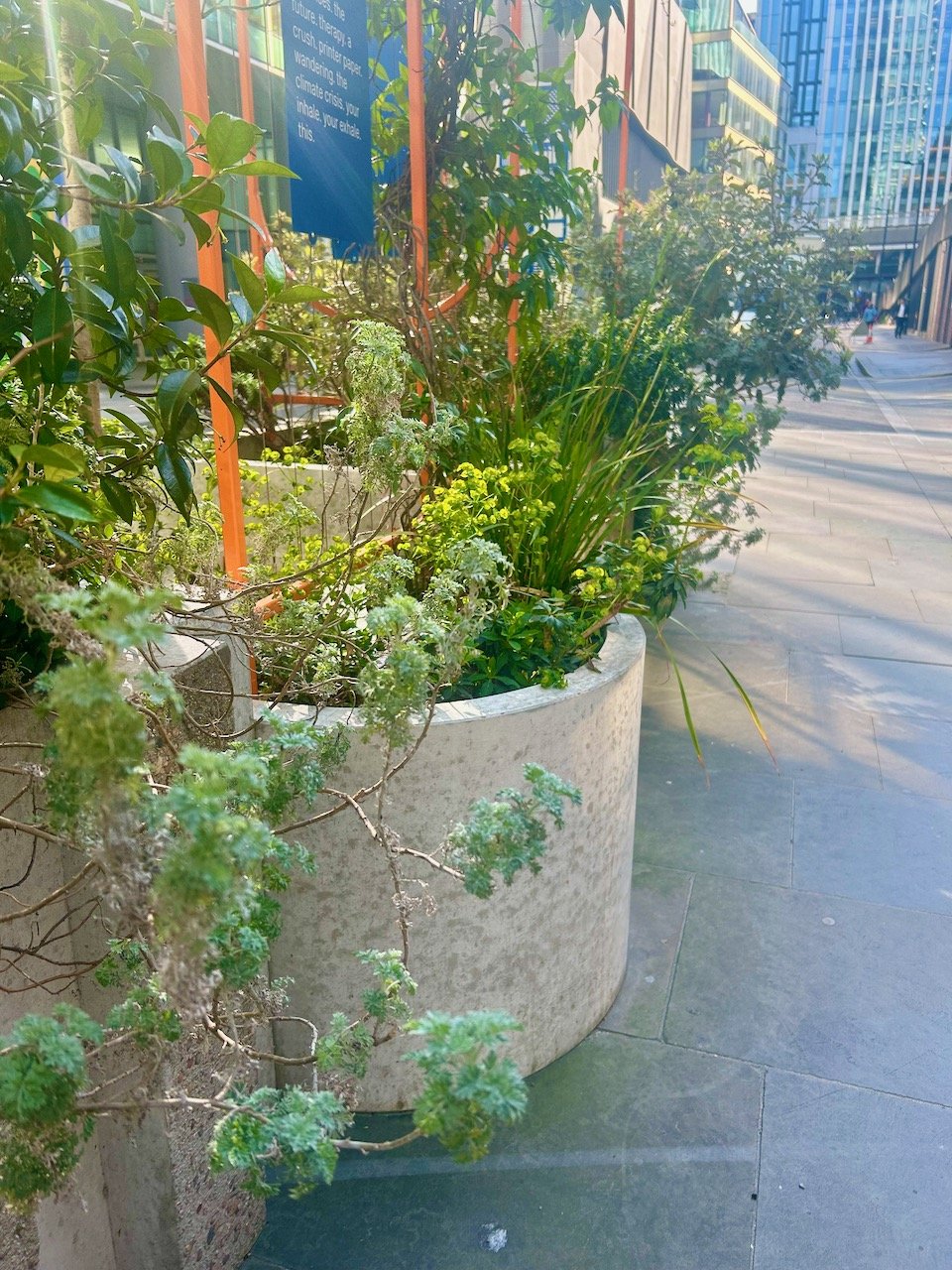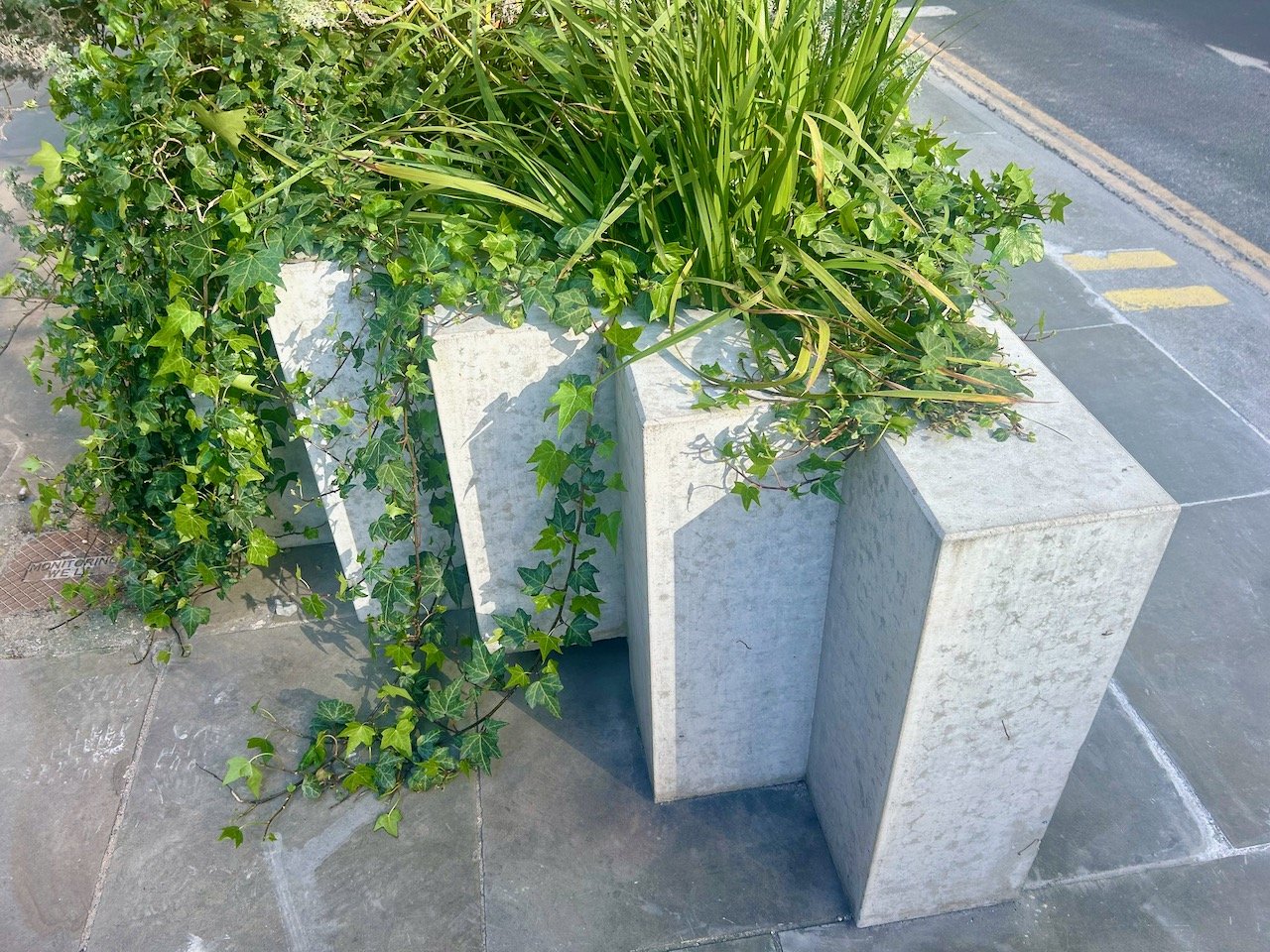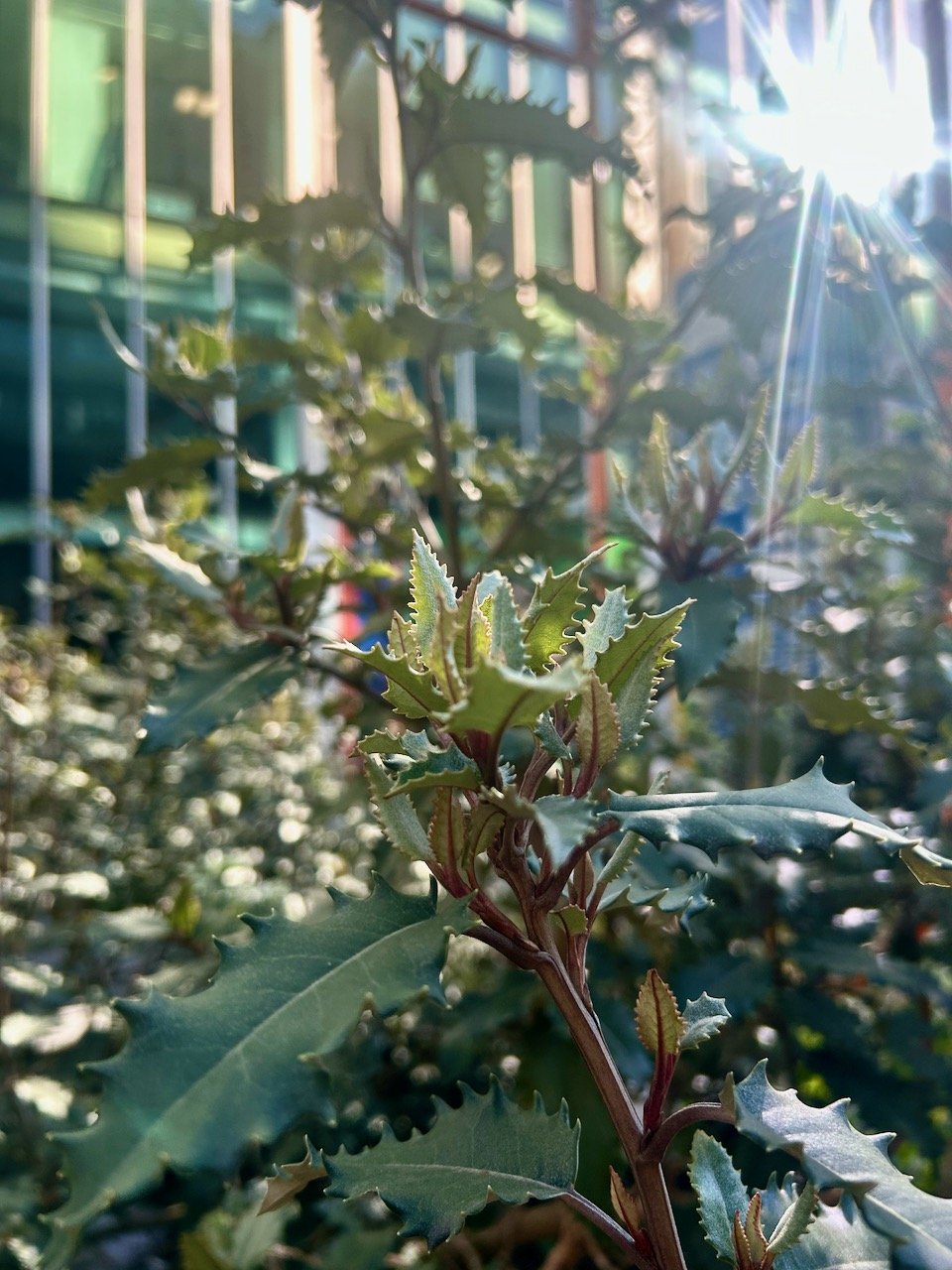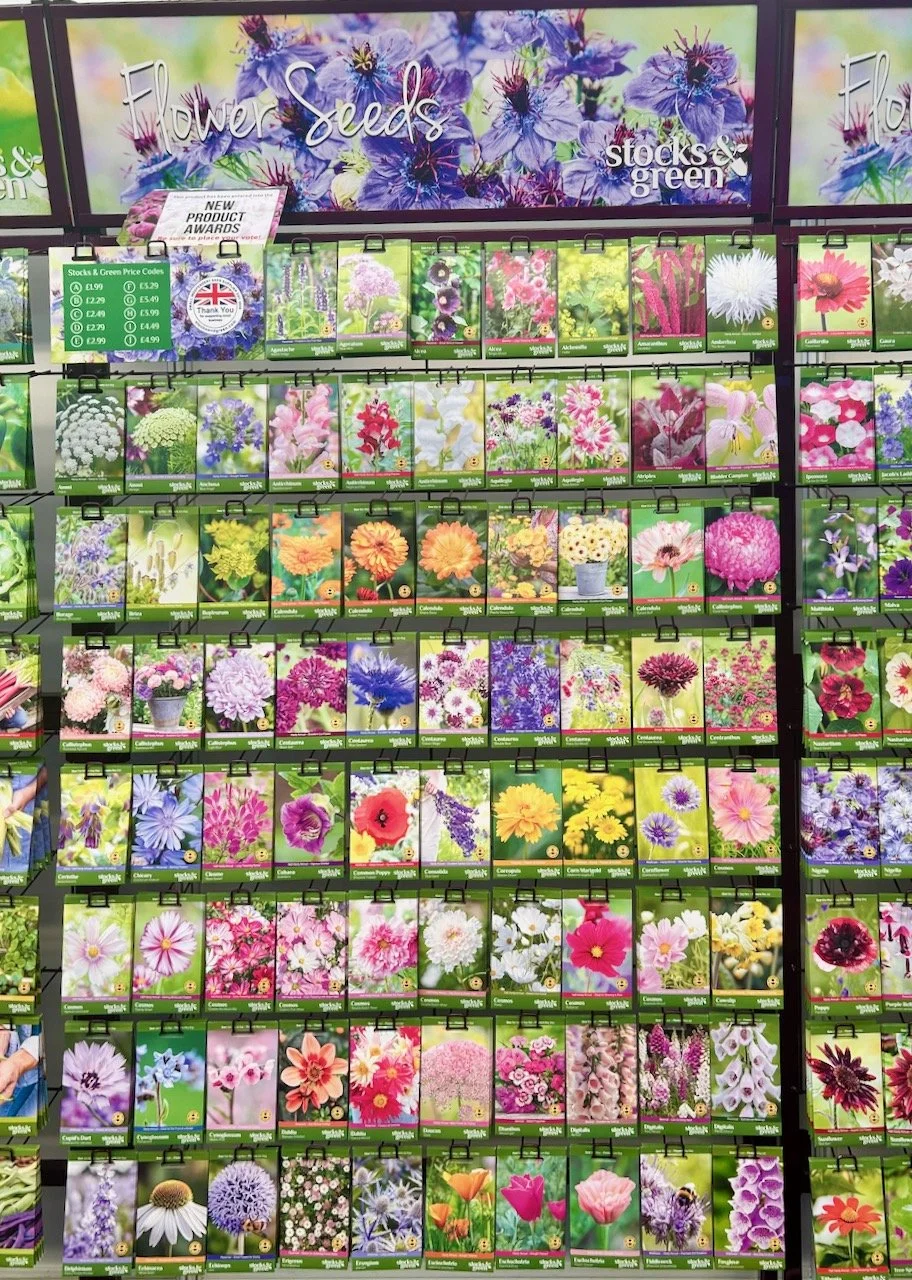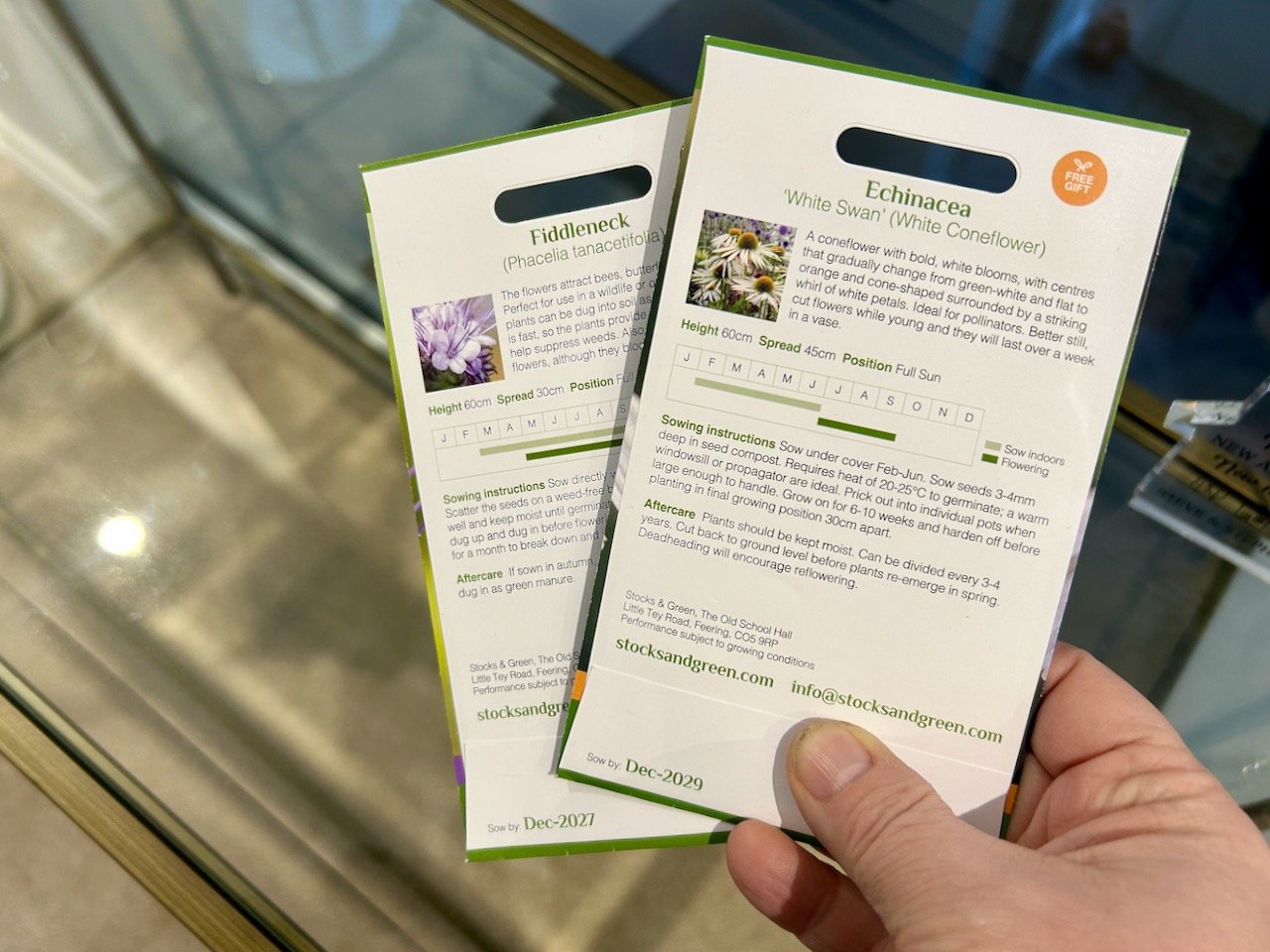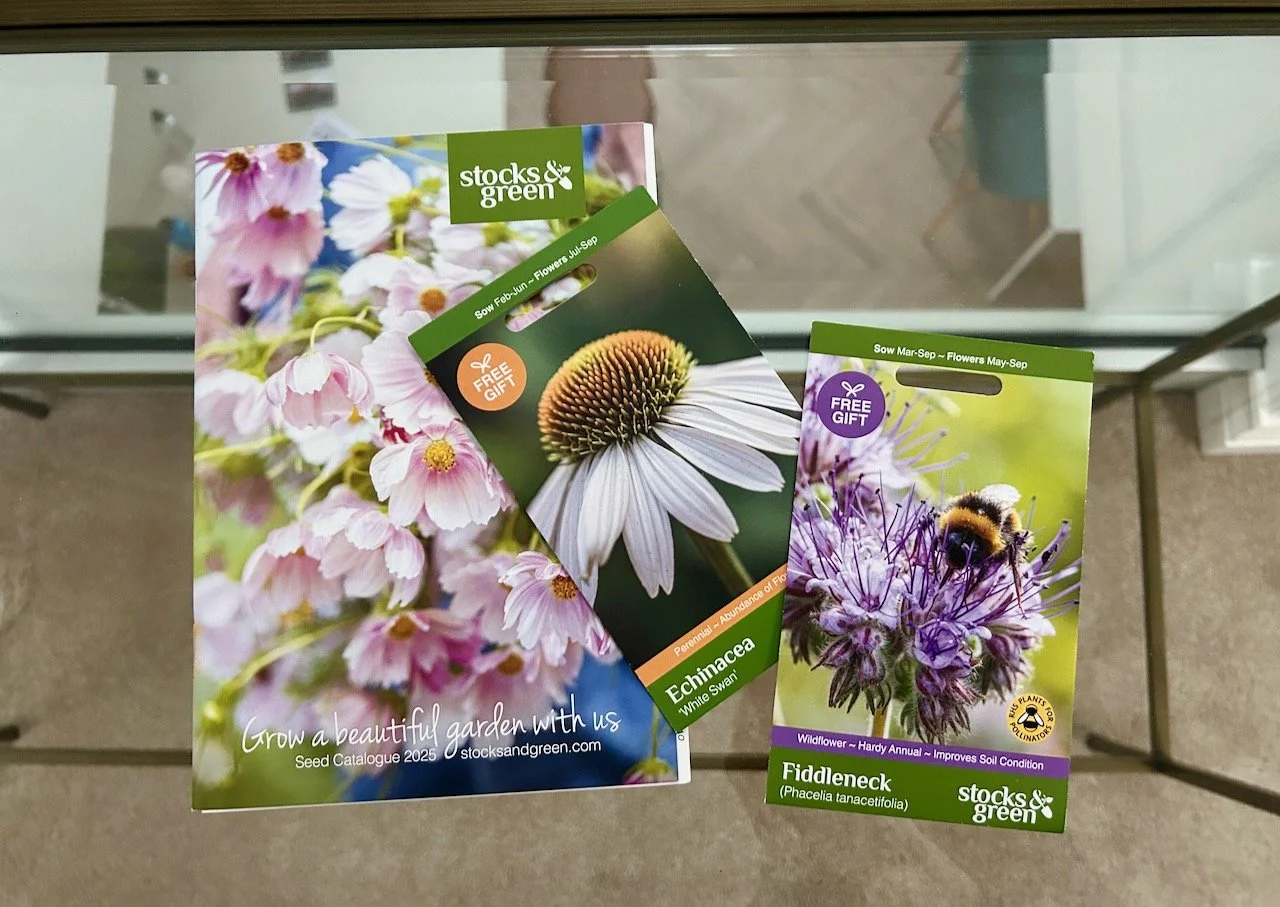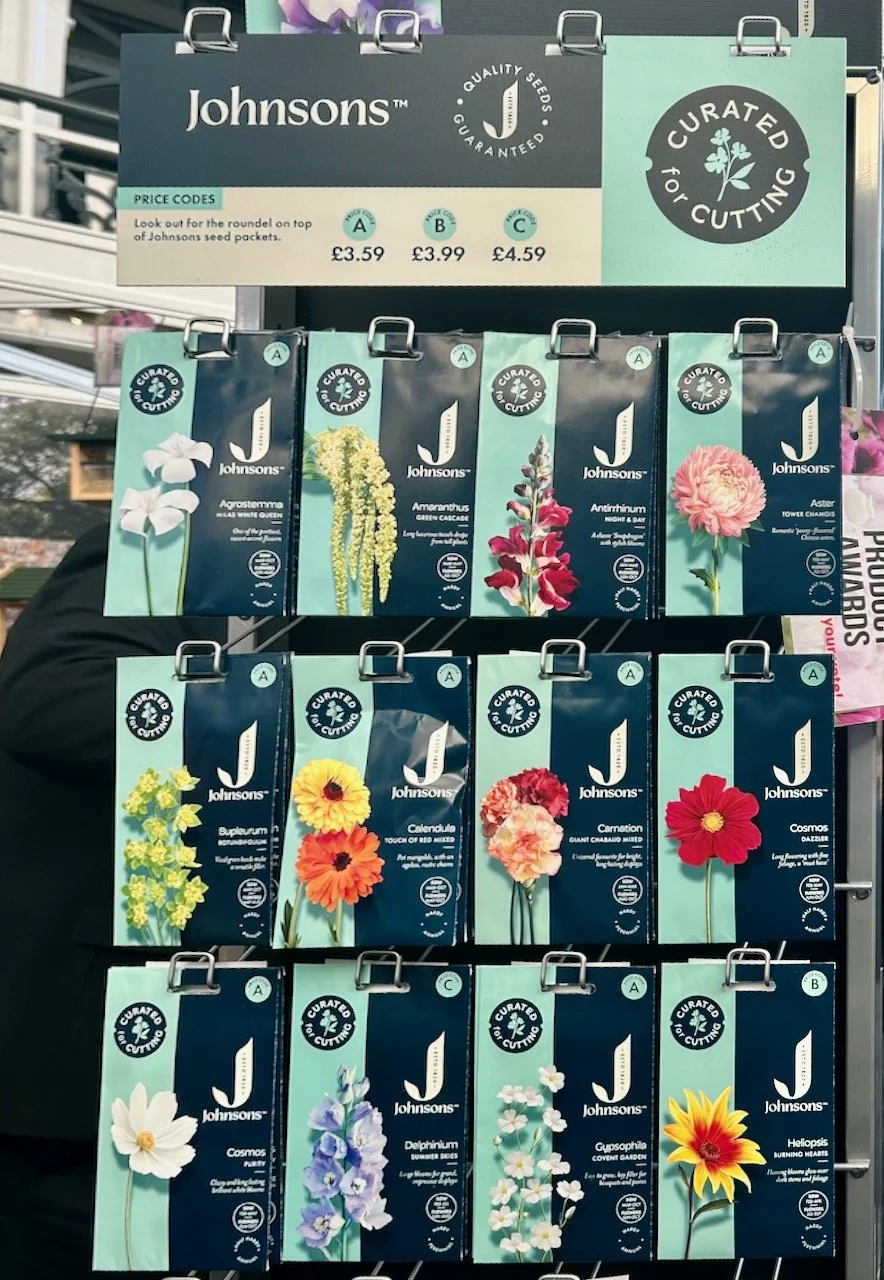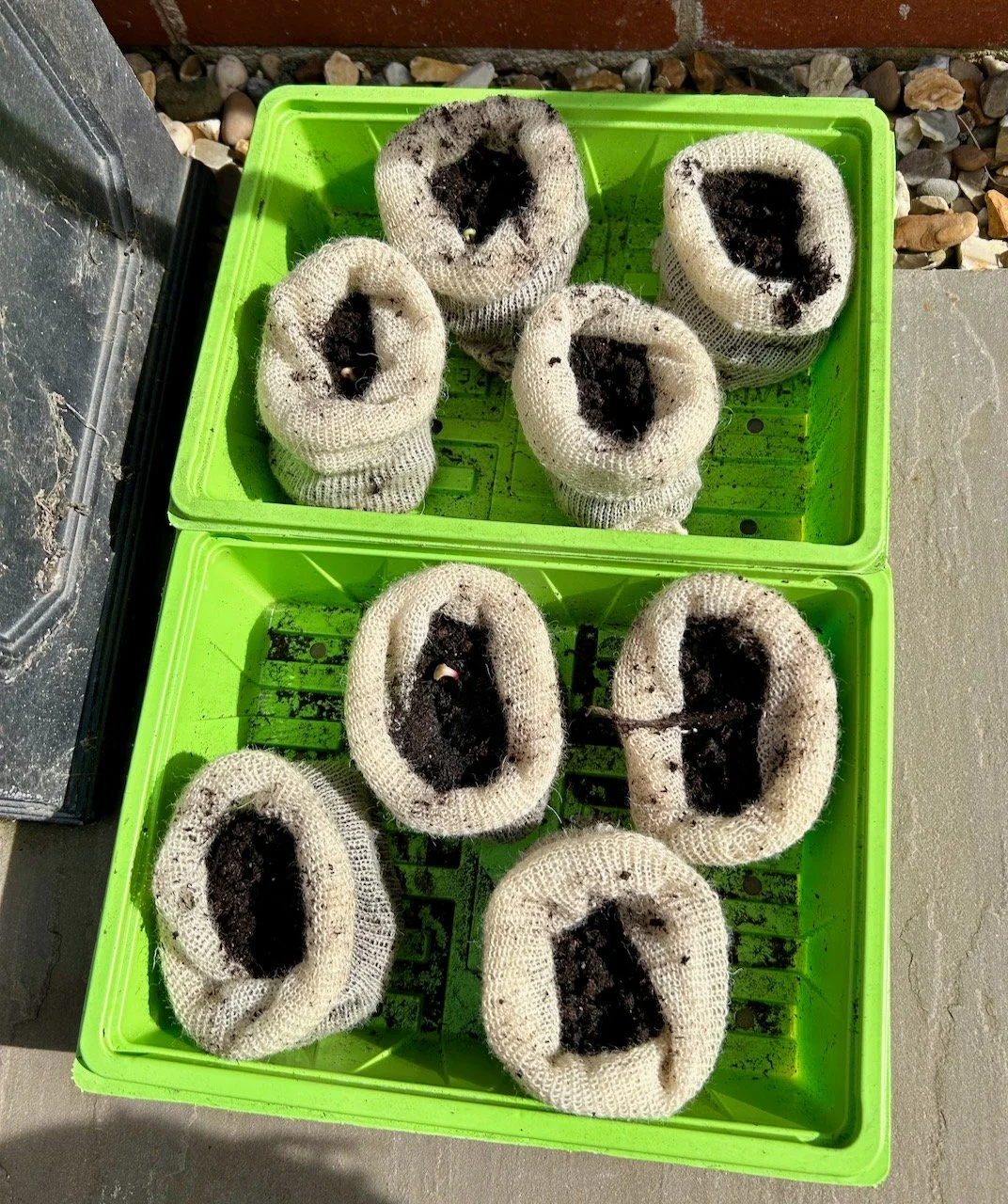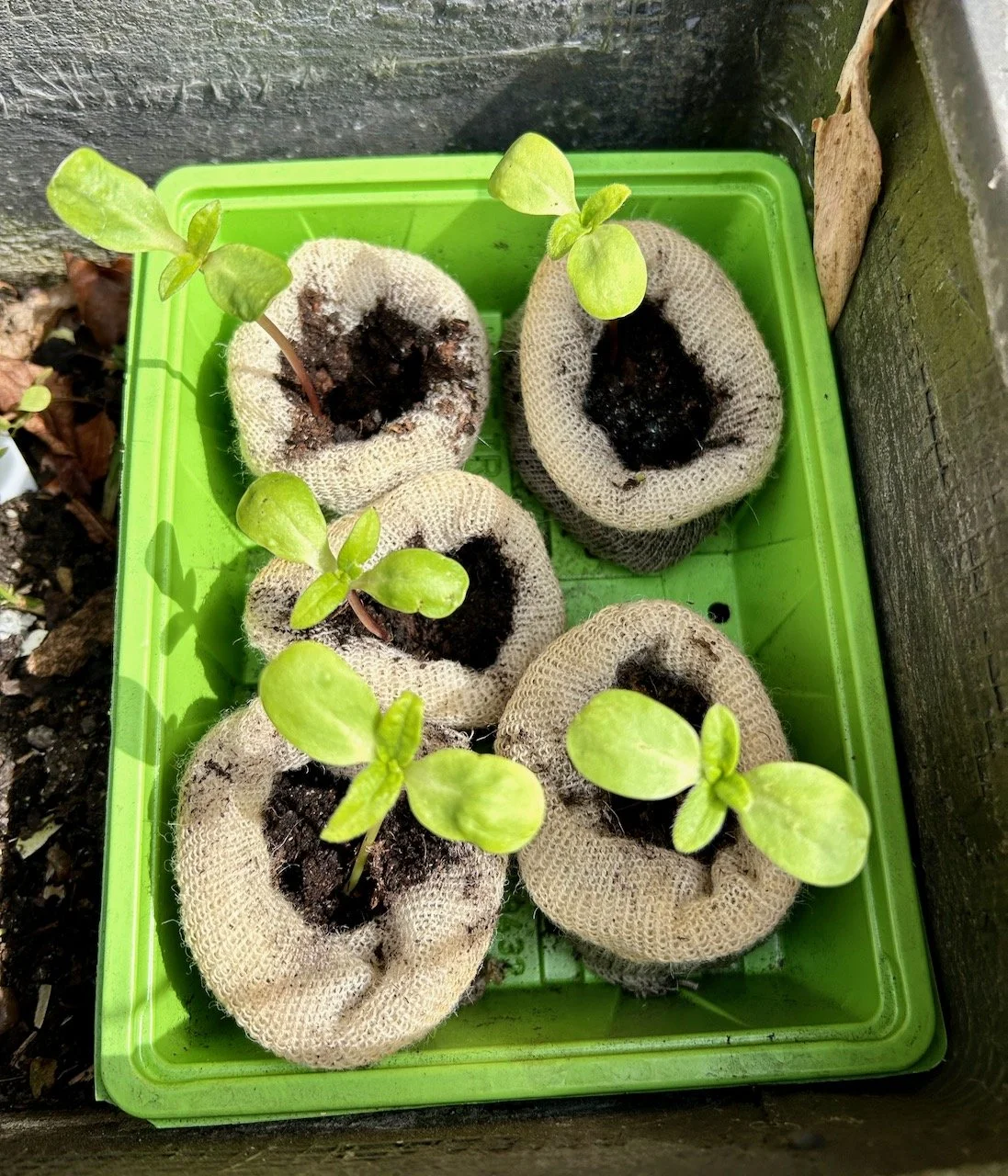On a sunny day in April I was down in London with some time on my hands and so I had a wander, and found myself coming out of yet another undiscovered part of the Barbican. I’m sure every time I go I find another way in or out, and so I wasn’t disappointed!
This time though I stumbled across the Moor Lane Clean Air Pop-Up Community Garden created in 2017 as part of the Low Emission Neighbourhood, and completely new to me. The garden intended to raise awareness of air quality in the City and to encourage pedestrians to take low emission routes to the Barbican station, the Barbican Centre and towards Guildhall using the Podium walkways.
Designed by three young landscape designers known as Studio xmpl, they worked pro bono with Friends of City Gardeners a City-based community group of garden volunteers, who now jointly maintain the garden along with the City of London Corporation’s City Gardens team.
The garden has been constructed from 57 galvanised steel pipes and all plants were chosen for their ability to trap particulates and improve air quality, as well as provided cover and forage for birds and nectar-rich flowers for pollinators.
In 2020 poet Kit Finnie and the Guildhall School of Music & Drama worked with local community groups to create poems which reflected on this garden, the pandemic and what the city means to them.
you have the power
to break something.
a common truth but
still. it comes to you
like ice water gulped
at 3am. joy that
streams freely from
the tap and cupped
hands to catch it in.
the air around your
body. all the london
beyond. beyond
that. another truth.
home is the thing
that settles round
your most beloved
person when they’re
still.
It was a garden full of structure, texture and shape with lush greenery and luckily on the day I visited sunlight glinting off the City offices behind. No doubt a great spot for City workers to eat their lunch.
I loved the poetry too, and wished I’d known about this place before - though of course I stopped working in the City in 2014, so a few years before this was created. But it’s the kind of place I’d have loved to escape to with colleagues, or alone, for lunch.
a distant hush is
an opportunity for
abundance. so is
a pigeon. a seed.
a baby animal. a
stranger biking to
the office. the sound
of a drill. a city fox. a
decision to attend.
a steady beat. a
gentle nudge. a
pavement.
new shoes. the
future. therapy. a
crush. printer paper.
wandering. the
climate crisis. your
inhale. your exhale.
this.
Somehow it seemed fitting that one of the ever increasing e-bikes parked up in the garden was green and labelled forest, less so that the building behind was a car park - but as with everything - balance!
inhale. exhale.
resilience is a
circle. a thread that
never ends. later.
you’ll savour this
encounter with
delight as fresh as
aloe. its audacity.
beating green in the
grey heart of your
city. feral moment
in your familiar day.
it will remind you
of the parts of
yourself that are
also a garden. a
poem. a breath. a
single leaf among
many.
I love discovering places like this, isn’t it great?
